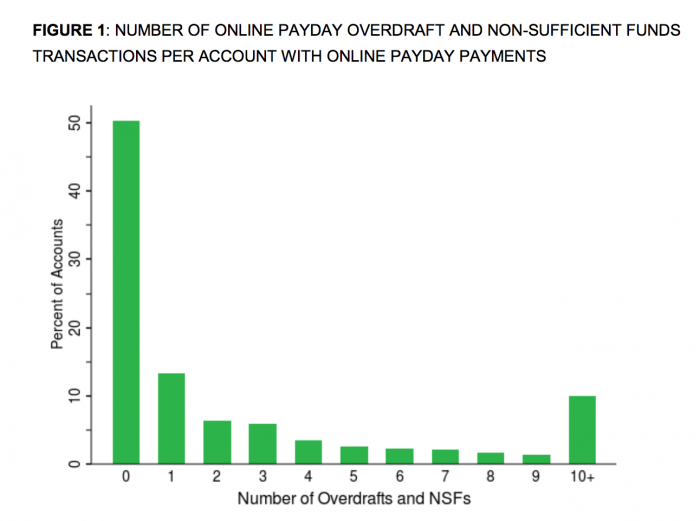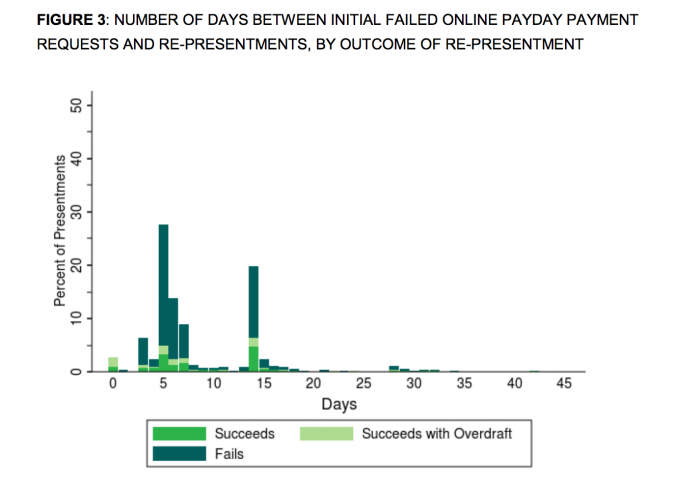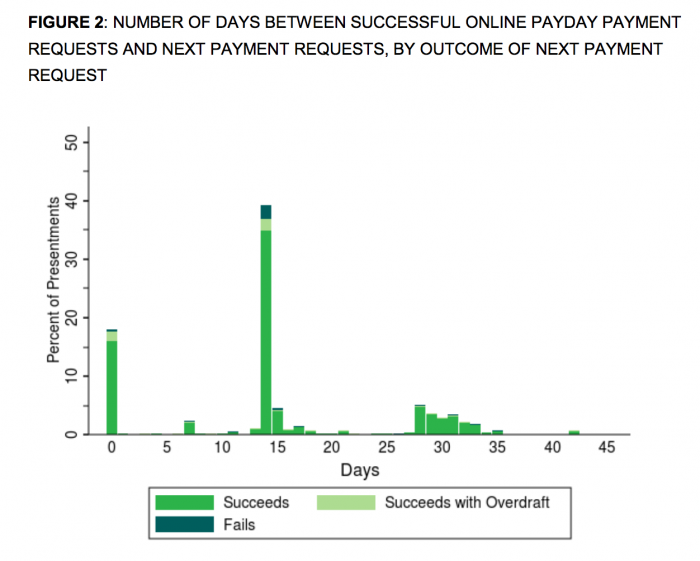We set out today to discuss payday loans, and specifically find out just how bad payday loans are... for both your credit and your wallet.
Payday loans are a popular topic on financial sites and blogs - you'd be hard pressed to find a site that hasn't written about them yet, or at least formed an opinion - and DQYDJ isn't immune. We've written about the economics of payday loans, and even discussed the liquidity considerations which lead borrowers to consider them as options.
So, today, let's talk about payday loans from as neutral a position as we can, and look at some of the most recent news in the payday loan arena.
(And, if we writers mostly agree that payday loans are "bad", let's try to answer just how bad payday loans really are.)
The CFPB Studies the Payday Loan Industry
Recently, the CFPB or Consumer Financial Protection Bureau, a new independent agency under the Federal Reserve has been studying the industry.
Although the CFPB's charter is a bit confusing, it's generally agreed the CFPB can make rules that bind financial institutions. They also take consumer complaints about financial institutions directly, and monitor and issue reports on markets and financial products.
Today, most relevantly, we'll point you to a recent report they published on payday lenders (PDF warning). It's the second time they've studied the industry in depth; the first effort dates to 2013, and you can see their original payday loan whitepaper in depth here (PDF warning, again).
And, yes, the stats are pretty grim - accounts they studied with identifiable payday loans paid an average of $2,164 over the 18 months studied, and a whopping $185 in overdraft and non-sufficient fund fees to their banks. Of those fees:
"$97 on average are charged on payment requests that are not preceded by a failed payment request, $50 on average are charged because lenders re-present a payment request after a prior request has failed, and $39 on average are charged because a lender submits multiple payment requests on the same day." CFPB Online Payday Loan Payments Report, April 2016
It's a tough industry, and a tough product. Although sometimes fee averages like the above $185 are due to a fat tail of bad borrowers, for payday loans the CFPB saw failed payments from roughly half of all borrowers. And, yes, there was a fat tail... it's just that the number of completely successful borrowers was only half of the population of payday loan borrowers:
"It Didn't Go Through? Try it Again!"
Although arguments can be made from both sides for the above graph - it, of course, takes two to tango - there is one payday loan issuer practice which is particularly sketchy.
Termed 're-presentment' by the CFPB, it's worth studying a bit more in detail. Let's tackle what that means:
Definitionally, payday loan borrowers are among the lowest rated of the sub-prime borrowers. While payday loan issuers have plenty to answer for, borrowers often do not borrow loans with intent to pay them back. One thing lenders have done is to split payments into multiple requests, to try to recover at least some of a payment. Here's how it would work:
Owed: $300
Issue 1 ACH Request: $100
Issue 2 ACH Request: $100
Issue 3 ACH Request: $100
That's fair enough; it's better for an issuer to receive some portion of payment than none, as we can all agree.
However, consider this: if the first one fails and the bank charges the borrower an overdraft fee... should the lender keep pounding on the account and try to receive payment for the second two requests?
Well, hopefully not - they should try again another day, since obviously something has changed. Turns out, while most lenders do give a bit of a grace period before issuing another ACH request, there is a small but sizable number of requests that happen on the same day(!):
So, 5-7 days and 14 days are the most common retry dates, with 2 weeks (I suppose to hit a second payday) is the most common successful retry date. Note, too, the large spike in failures at Day 3.
The 0 day pings - that concerns me, but I see that these second ACH hits are often successful (if causing overdrafts). The thing is, most subsequent requests are going to fail - and this is the vicious cycle of payday loans, when you consider the fees that are racking up on the back end in the bank account.
'0th' day repayment requests are more common (thankfully) for successful ACH requests - which really just speaks to the nature of the product. You also see a pattern of waiting for the second payday, which usually occurs about 2 weeks later:
So Just How Bad are Payday Loans?
Payday loans fill an obvious niche - subprime borrowers who need money before their next paycheck. Unfortunately, there are some shady practices in the industry which can trap borrowers in a cycle of dependency - and sure, we recognize that the borrowers cause many problems as well.
If we're estimating that half of borrowers successfully borrow with payday loans without having to pay a second institution (his or her bank, for NSF and overdraft fees), that means that roughly $185*2 = $370 in fees is what the average failed borrower is paying.
It's unfortunate; while it's simplistic to suggest that payday lenders shouldn't even exist, the people who take out payday loans (or their cousins - auto title loans) are often desperate without many other credit options to turn a 2 week paycheck cycle into real liquidity.
It can be easy to cast our eyes down on the industry when we have access to all sorts of forms of superior credit - from cards to HELOCS - but those just are rarely an option in the lowest of the subprime market. Payday loans and auto title loans fill an under-served niche - and completely eliminating the industry will drive borrowers to pawn shops and (as we've noted before) illegal lenders and loan sharks.
While some of the battle lines have already been drawn - the CFPB has proposed a framework to regulate payday loans - there are still a lot of players yet to take sides. We noted recently that (big fish on the internet) Google banned all 'payday loan' ads (defined as having repayment dates of under 60 days or effective APRs over 36%) from the AdSense ecosystem - we're not exactly sure what the solution is here. While repayment durations could be part of the solution, arbitrarily capping APRs doesn't seem like the right move (and what would an illegal lender charge? I doubt it would be 36.01%...).
Remember that, at the end of the day, 50% of borrowers are completely successful with the product - how can we clean up the industry without forcing them to a worse alternative?
So how bad are payday loans? Pretty bad... but things could be worse.
Maybe you've got some ideas on how to improve the prospects for sub-sub-prime borrowers? Let's hear them. How bad are payday loans, in your mind?



